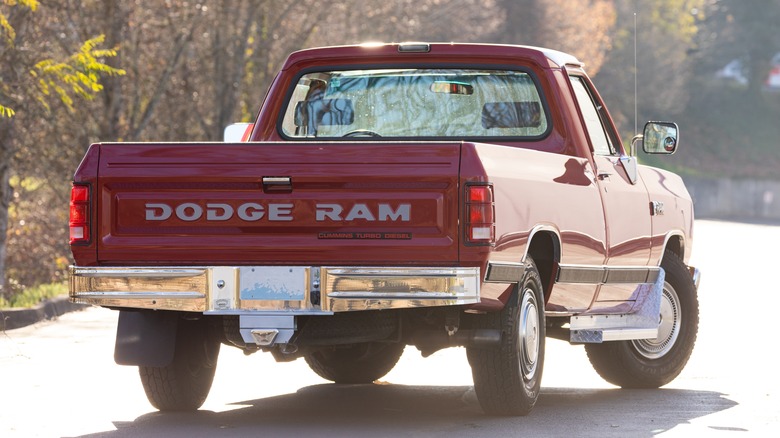Prices for old diesel trucks are spiking, but the real question is why? Diesel truck fans have long clung to the idea that these rigs “run forever,” and theoretically, they’re not wrong. As Jalopnik noted in the guide to diesel maintenance tips, diesel engines are built for abuse — torquey, overengineered, and often simpler to maintain than their modern gas or hybrid counterparts. When maintained right, they’ll outlast the marriages of their owners.
If the 7.3-liter Ford Powerstroke were a Pokémon, its special attack would be the “Market Value Doubler.” Scroll through Craigslist or Facebook Marketplace and you’ll find a beat-up 2001 F-250 with half a million miles and a cracked dash listed at the same price as a lightly used midsize SUV. More importantly, they’re pre-apocalypse ready.
Buyers want something they can fix with a crescent wrench, not a laptop and proprietary software, and newer diesel engines have earned a spot on the “Ugliest Engine Bay” lists thanks to their tangled mess of sensors and hoses — no wonder older diesel trucks look like gold to buyers who just want simplicity. And if you’re buying an older diesel to avoid the modern headache of smog checks, well, that brings us to the next point.
No DEF, no emissions test, no problem
One of the biggest secrets behind the used diesel truck boom? Emissions testing loopholes. In many states, older diesel trucks are either exempt from regular smog checks or subject to far more lenient testing requirements.
Texas, for example, doesn’t test diesel vehicles for emissions at all, while Florida has no emissions program whatsoever. And while many older trucks dodge inspection based on age or weight class, the specifics vary: Delaware exempts diesels made before 1997, and Arizona requires emissions tests for 1967+ diesel trucks but only in certain counties. Even in California — which often plays the regulatory villain — diesel pickups built before 1998 are still exempt from smog checks under current rules. The stricter requirements apply mainly to commercial rigs like buses and garbage trucks.
So that 1994 Dodge Ram 2500 you found on Marketplace? In most states, it’s the last vehicle you’ll own that doesn’t need government-mandated diagnostics and a glowing emissions report card just to run to the hardware store.
Panic, politics, and price spikes
Let’s not forget the chaos that kicked this all off. Diesel supply disruptions in 2022 sparked headlines like “only a 25-day supply of diesel left.” While that shortage never fully materialized, the panic stuck. Pair that with ongoing inflation, a 3.3 percent drop in new diesel vehicle sales in Q1 2025 compared to Q4 2024 per an Engine technology Forum report, and a regulatory climate that seems to be tightening like a vise — it is no wonder used diesel trucks are getting gobbled up like toilet paper in 2020.
New trucks? They’re pushing near six-figures price tags, loaded with enough sensors to moonlight as airport security, and buried under emissions tech most folks can’t, or don’t, want to deal with. Meanwhile, that old Duramax or Cummins from the early 2000s? It’s simpler, rebuildable, and in many states, it can skate by without an emissions test.
Yes, they rattle. They smell. They might leave an oil stain in your driveway and smoke out your HOA. But for a growing crowd of buyers, that’s not a deal-breaker. It’s the whole point.




